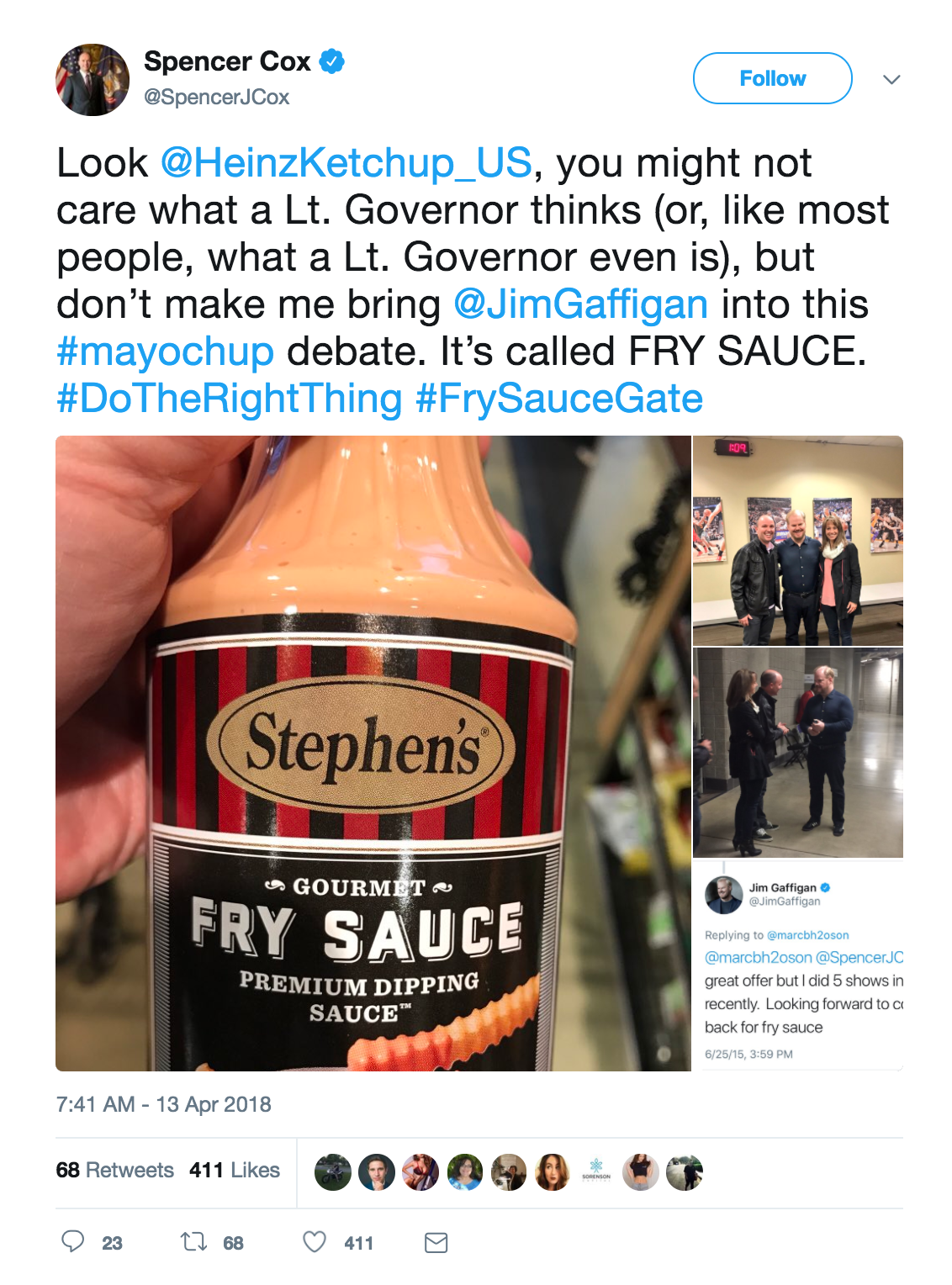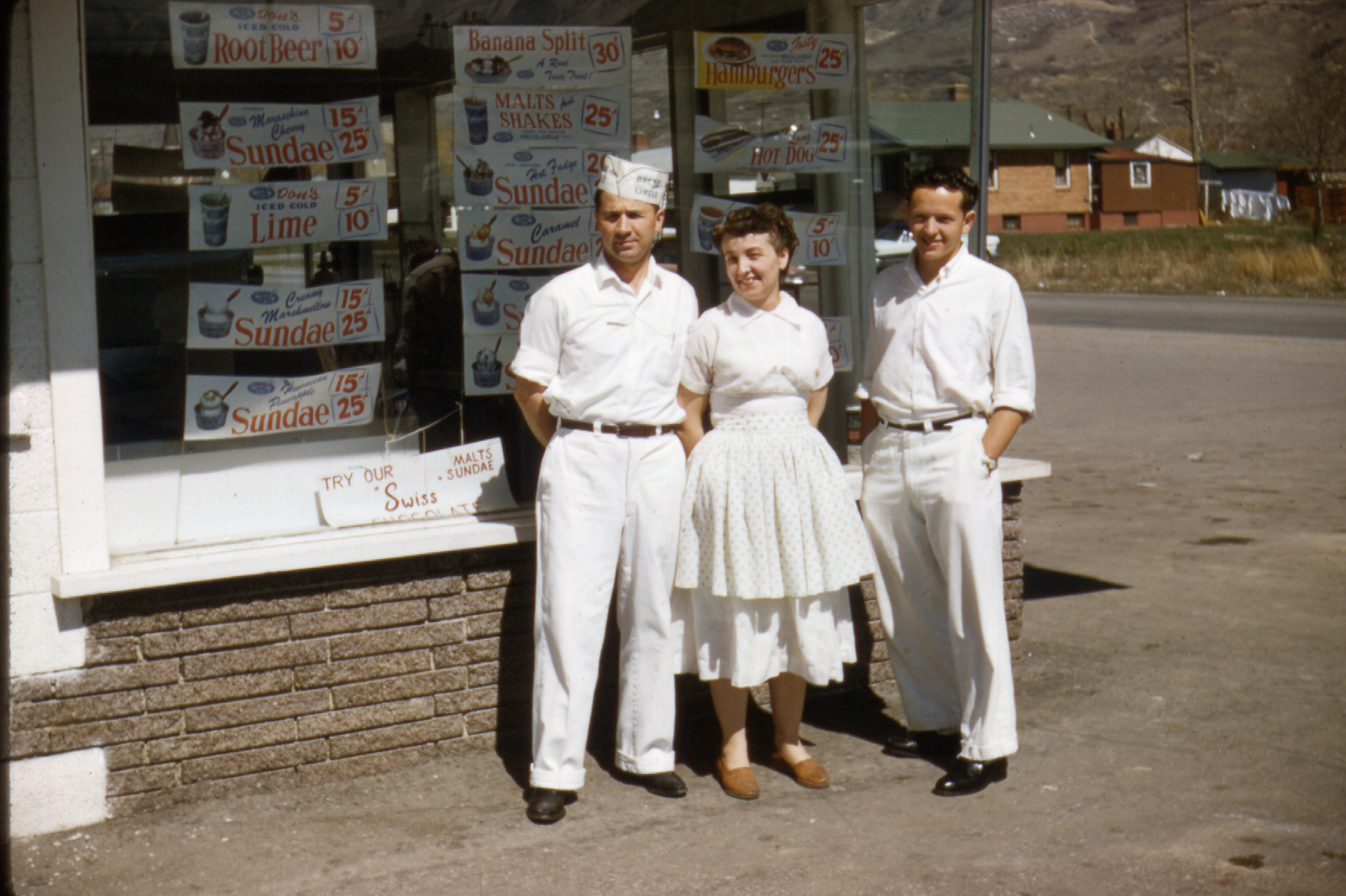Is Mayochup fry sauce? The BYU professor compiling the book on Utah food sets the record straight.

Heinz drew the ire of Utah’s fry sauce lovers earlier this month when it announced its latest product: Mayochup.
The ketchup and mayonnaise-based product emerged into national consciousness on April 11 after a Heinz Twitter poll asked, “Want #mayochup in stores? 500,000 votes for ‘yes’ and we’ll release it to you saucy Americans.” The poll garnered almost 1 million votes, with 55 percent voting yes.

But the Utah Twitter world responded immediately with some “saucy” tweets of its own to set the record straight about the true name and origin of the sauce. And Utahns weren’t alone; people from all over voiced the “true name” for the condiment including some Argentines who were quick to claim the sauce as a spin-off of “salsa golf.”
Though variations of the mixture exist throughout the world, “they don’t have the same history as Utah’s fry sauce does,” says Eric A. Eliason (BA ’92), a BYU English professor and folklorist who’s compiling a book with an entire chapter dedicated an entire chapter to the origins of fry sauce. The book on Utah cuisine, This Is the Plate: Utah Foodways, coedited by folklorists Carol Edison and Lynne McNeill, is due out later this year, with folklorist Michael Christensen penning the fry sauce chapter.
In sum, there are a lot of fry sauce origins, says Eliason. “The basis of mayonnaise and ketchup being mixed together has emerged lots of places lots of times and in lots of contexts,” Eliason says. But according to this expert, one thing is clear: a small burger joint in Provo is really the place where “fry sauce” started being a Utah thing.
Fry Sauce Origins
In the mid 1950s, two teenage employees—Max Peay and Ron S. Taylor (BS ’67)—mixed ketchup and mayonnaise together at the small Arctic Circle franchise they worked at near 5th North 9th East in Provo.
“We tried all kinds of things during those years just to have fun,” Ron says. “One night we took ketchup and mayonnaise and . . . because we liked it, we started sharing it.”
Eventually customers started asking for “that fry sauce stuff,” and pretty soon it was popular enough to replace ketchup, with “fry sauce” becoming the name. Ron’s father, Stanley, then bought the small franchise.
When an Arctic Circle sales representative checked in on the 9th East location, Ron says the rep asked if he could take the sauce to the headquarters in Salt Lake City to see if they liked it. Thinking it was no big deal, Ron and Stanley agreed.
“And that’s how it got to the home offices of Arctic Circle. As the years went by they eventually claimed they’d developed it on their own,” Taylor says. “But it really came from our drive-in down there in Provo.”

Though the small 9th East hotspot was still a franchise of Arctic Circle when customers started asking about “that fry sauce,” Taylor’s father, Stanley, eventually converted it into an independent burger shop called Stan’s Drive-In.
Within the next few years, Arctic Circle had instituted the sauce in all their franchises around the country, and Stan’s local Utah competitors like Iceberg Drive Inn, Crown Burgers, and Burger Supreme also began offering the high-demand sauce.
Stan’s Drive-In has since relocated to Salem, Utah, but it still sports the moniker, “The Original Birthplace of Fry Sauce.”
Utah’s Sauce
The sauce has since become an iconic Utah food. “What makes [Stan’s fry sauce] different than a million other kinds . . . is the Arctic Circle folks [deciding] to take it throughout their whole franchise and then the competitors catching on,” Eliason says. “So there’s kind of a sequence of events that made it become an identity food for Utah.”
The 2002 Utah Olympics also played a role in cementing fry sauce as a Utah-specific food, Eliason says, as Utah searched for a state-identity that didn’t necessarily involve religion.
“Out of those kind of discussions emerged fry sauce, Jell-O, scones—all of these kinds of Utah-distinctive foods,” Eliason says. “[It’s] something that Mormons and non-Mormons in Utah share as part of a state identity.”
Heinz Mayochup isn’t the only attempt to nationalize a distinctive Utah food. Earlier this month Walmart’s advertisements for an instant mix of funeral potatoes garnered social media attention.
Many of Utah’s fry-sauce makers go to great lengths to protect their individual fry sauce recipes, says Eliason. Some restaurant owners even mix up batches in their own homes, worrying that employees might sell their recipes to the competition.
Heinz has left it open to the public to choose a new name for Mayochup, tweeting on April 16: “We heard you saucy Americans and we’re bringing you our version of the delicious duo you’ve been eating for years. Are you Team Mayochup or should we call it something else? Let us know your thoughts!”
Ron Taylor, for one, has already cast his vote. “I hate the name Mayochup,” he says with a laugh.












